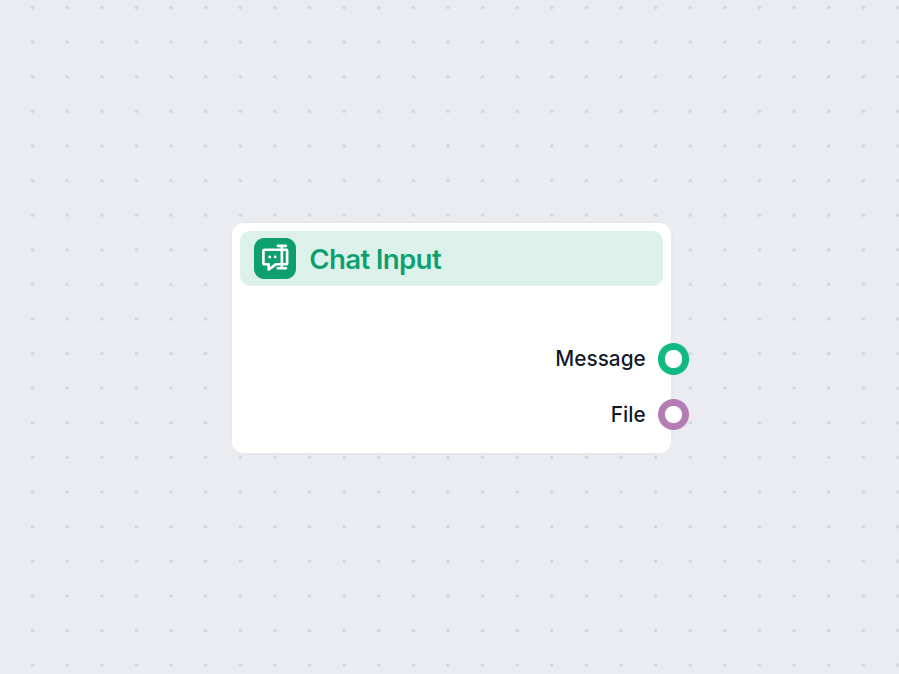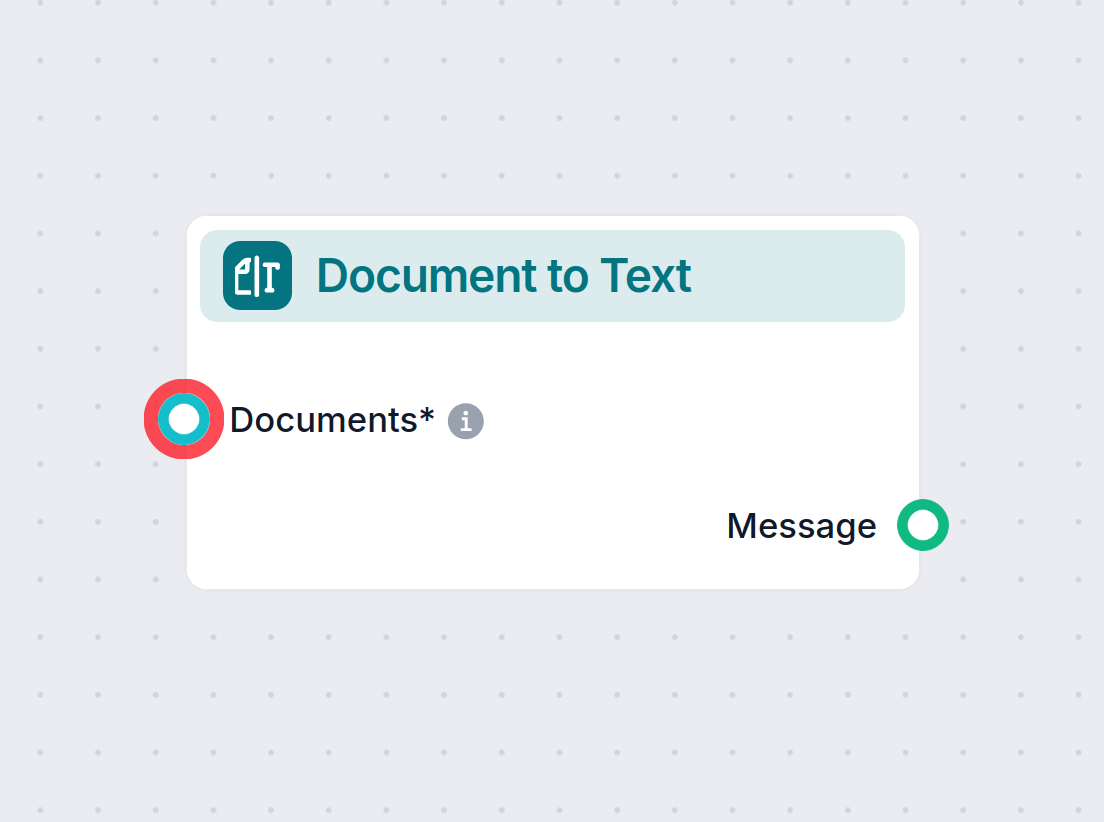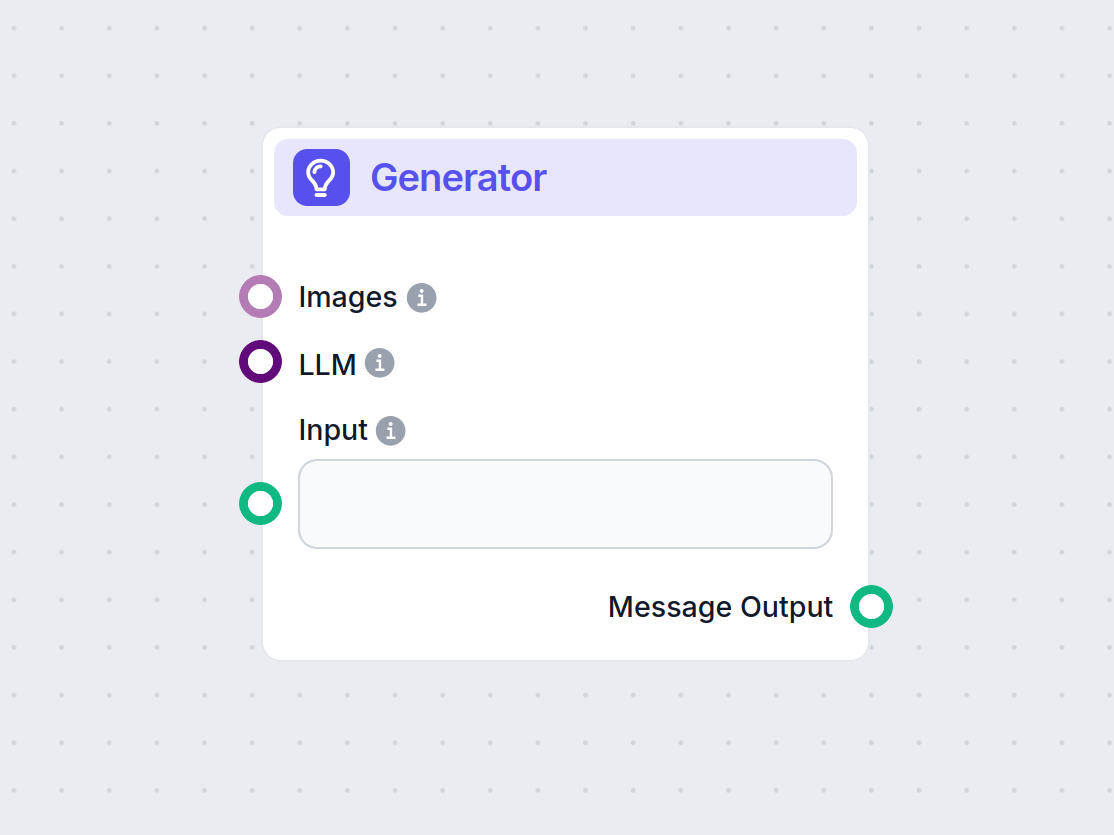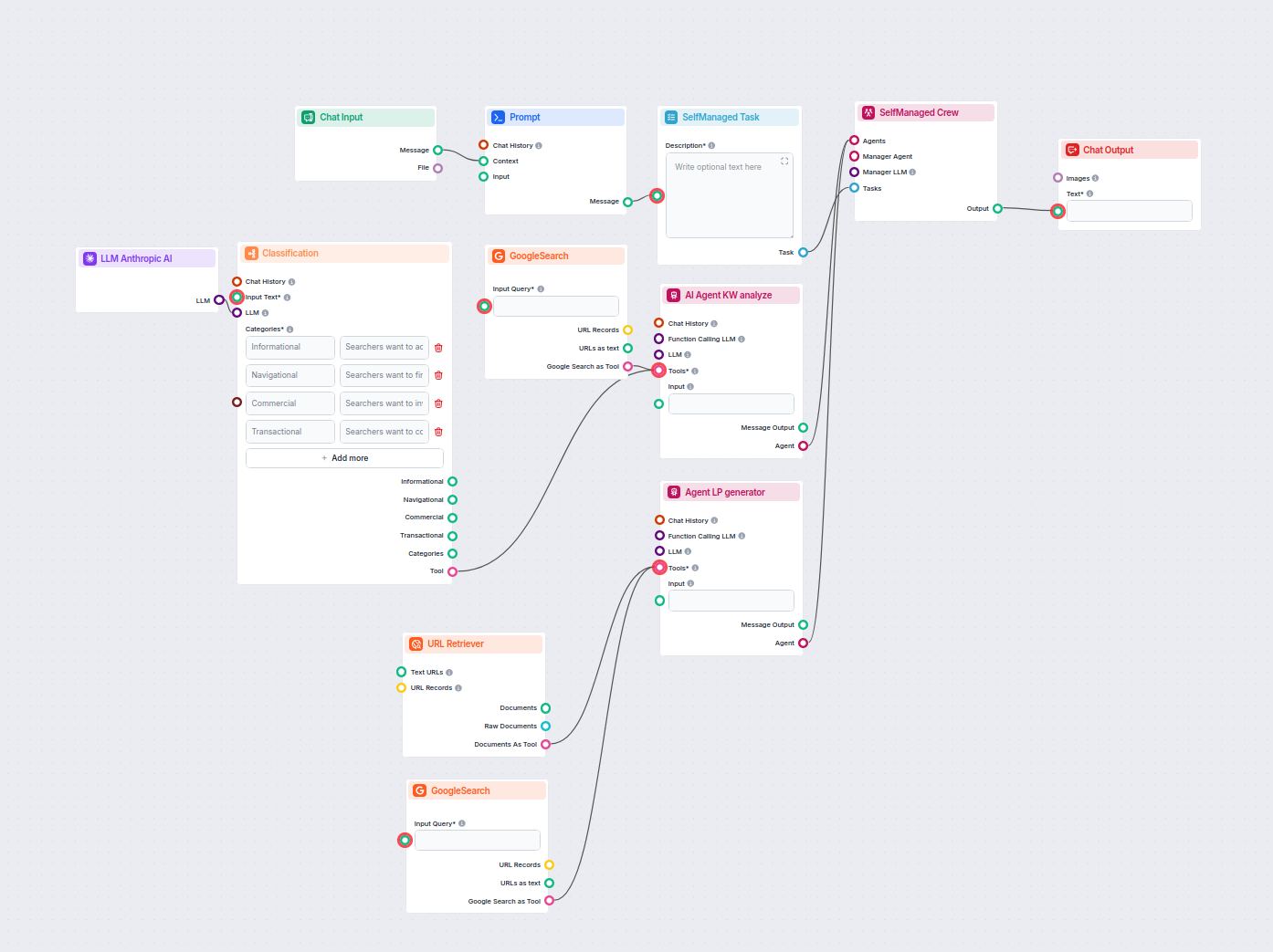
Search Intent Classifier & Landing Page Generator
This AI-powered workflow classifies search queries by intent, researches top-ranking URLs, and generates a highly optimized landing page for PPC and SEO campaig...
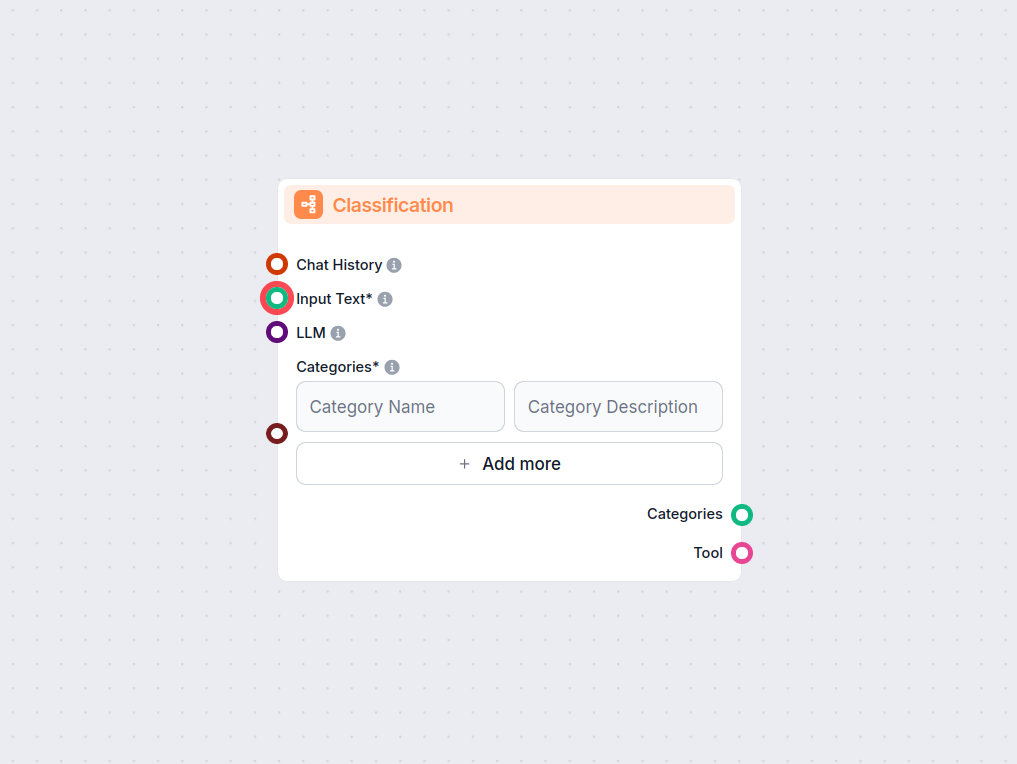
Automatically sort and label input text into categories using AI, with customizable options for categories, models, and classification types.
Component description
The Classification component is designed to perform text classification, sorting incoming text into one or more user-defined categories. This is particularly useful in AI workflows where automatic categorization, routing, or labeling of incoming messages or documents is required.
At its core, this component takes an input text and classifies it according to a set of categories and their optional descriptions. It supports integration with conversational history and allows customization of the classification logic using various configuration options. The component is model-agnostic and can leverage any compatible language model, including lightweight models, making it flexible and efficient for a variety of use cases.
| Input Name | Type | Required | Description |
|---|---|---|---|
| Input Text | Message | Yes | The main text to be classified. |
| Chat History | InMemoryChatMessageHistory | No | Previous conversation messages to provide context and improve classification accuracy. |
| LLM (Model) | BaseChatModel | No | Specifies which large language model to use for the classification. |
| Categories | Data (Nested Dict) | Yes | A dictionary of category names and optional descriptions to define what the text should be classified into. |
| Classification Type | Dropdown (str) | Yes | Choose how many categories can be selected: One or More, Zero or More, One Only, Zero or One. |
| Custom System Message | Message | No | An optional system prompt to further guide the classification model’s behavior. |
| Tool Description | str (multiline) | No | A description for the tool, helpful when used within agent frameworks. |
| Tool Name | str | No | Optional, for referencing this tool in agent-based workflows. |
| Verbose | bool | No | Option to enable verbose output for debugging or transparency. |
| Output Name | Type | Description |
|---|---|---|
| Categories | Message | The resulting classification(s) for the input text. |
| Tool | Tool | The classification tool instance, for integration in agent workflows. |
This component streamlines the process of integrating robust text classification into your AI workflows. Its flexibility, context-awareness, and support for both basic and advanced configuration make it a valuable building block for automation, analytics, and conversational AI systems. Whether you need simple keyword-based categorization or nuanced, context-rich intent detection, this component can be tailored to your requirements.
To help you get started quickly, we have prepared several example flow templates that demonstrate how to use the Text Classification component effectively. These templates showcase different use cases and best practices, making it easier for you to understand and implement the component in your own projects.
This AI-powered workflow classifies search queries by intent, researches top-ranking URLs, and generates a highly optimized landing page for PPC and SEO campaig...
It analyzes input text and assigns it to one or more categories you define, using an AI model for accurate, automated classification.
Yes, you can set custom categories and descriptions to tailor classification for your specific workflow needs.
Yes, you can enable chat history input to improve the accuracy of classification by considering prior conversation context.
You can select from various language models, including small or large LLMs, depending on your accuracy and speed requirements.
Yes, you can specify whether the classification should return one, multiple, or no categories at all for each input.
Experience fast and reliable AI-powered text categorization in your automations with FlowHunt's Text Classification component.
The Chat Input component in FlowHunt initiates user interactions by capturing messages from the Playground. It serves as the starting point for flows, enabling ...
FlowHunt's Document to Text component transforms structured data from retrievers into readable markdown text, giving you precise control over how data is proces...
Explore the Generator component in FlowHunt—powerful AI-driven text generation using your chosen LLM model. Effortlessly create dynamic chatbot responses by com...
Cookie Consent
We use cookies to enhance your browsing experience and analyze our traffic. See our privacy policy.
